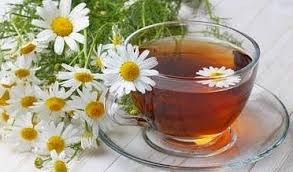Creatinine is a chemical waste product of muscle metabolism that is eliminated through the kidneys. Persistently high levels of creatinine indicate that the kidneys may not be functioning properly. The normal range of creatinine in blood is:
- 0.6 to 1.2 mg/dL (or 53 to 106 mcmol/L) for males, and
- 0.5 to 1.1 mg/dL (or 44 to 97 mcmol/L) for females.
The values may vary slightly depending on different laboratories and their techniques. Men usually have higher levels than women because creatinine increases with muscle mass.
Factors that contribute to high creatinine levels include dehydration or inadequate water intake; medications like ACE inhibitors, NSAIDs like aspirin and ibuprofen, chemotherapy drugs and others; strenuous exercise; chronic diseases like kidney disease, diabetes, high blood pressure and thyroid disorders; kidney problems; and excessive blood loss.
Muscle building, taking the dietary supplement creatine and eating large amounts of meat can also elevate creatinine levels.
Some common symptoms of high creatinine are digestive problems like nausea, vomiting and poor appetite; fatigue; urinary changes like frequent night urination, decreased urine output and dark colored urine; edema; itchy skin; and shortness of breath.
In addition, you can try some home remedies and dietary tips to help manage the problem. Drinking plenty of water, for instance, is highly recommended when dealing with this problem.
1. Chamomile(Babune ka Phool) Tea)
A study published in the Journal of Agriculture Food Chemicals found decreased creatinine levels in study participants who drank chamomile tea. Plus, this herb will work as a mild sedative and induce relaxation.
- Put two or three teaspoons of dried chamomile flowers in a cup of hot water.
- Let it steep for three to five minutes.
- Strain the tea and drink it.
- Drink a few cups of chamomile tea daily.
2. Stinging Nettle(bichu booti,bichoobooti,shishun)
Stinging nettle can help remove metabolic wastes and promote renal excretion due to its diuretic properties. Plus, it purifies the blood and improves immunity.
- Add two to three teaspoons of dried nettle leaves to a cup of hot water.
- Let it steep for 10 minutes.
- Strain and drink it.
- Drink this nettle tea once or twice daily.
Note: This remedy can interfere with blood-thinning, high blood pressure, diuretic and diabetic medications. Consult your doctor before using this remedy.
3. Dandelion Root(Dudal)
Dandelion root tea also works as a natural diuretic to flush out toxins and lower creatinine levels. It also helps improve kidney function and relieve edema or swelling due to water retention.
- Put one tablespoon of dried dandelion root powder in a cup of hot water.
- Allow it to steep for about 10 minutes.
- Strain and drink it.
- Drink this tea two or three times daily for a few days or weeks.
Note: Dandelion may interact with diabetes and high blood pressure medications.
4. Cinnamon(दालचीनी).
Due to its diuretic properties, cinnamon is considered good for those suffering from high creatinine levels and kidney problems. It helps increase kidney output and promotes renal filtration ability. It alsohelps regulate blood sugar levels, thus preventing further renal damage.
Incorporate cinnamon in your diet by adding it to warm beverages, smoothies, baked goods, cereals and other foods.
Note: Do not take this herb in excess or it may lead to liver and kidney damage. Though there is no established dosage still, the generally recommendation is one-half to one teaspoon of cinnamon a day.
5. Siberian Ginseng
Siberian ginseng containing eleutheroside compounds is mostly used as a health supplement for its energy-boosting properties. It is also an effective remedy to get rid of excess creatinine because it revitalizes the kidneys and promotes renal circulation. Plus, you’ll get its anti-fatigue and anti-stress benefits.
The general recommended dosage for this herb is 300 to 600 mg per day. For proper dosage and suitability for your condition, consult your doctor. It can also be taken with cinnamon.
Note: Do not confuse Siberian ginseng with other types of ginseng, especially Asian ginseng which has an anti-diuretic effect. Seek your doctor’s advice before taking Siberian ginseng because it may interfere with many prescription drugs.
6. Astragalus(indian milkvetch)
Astragalus is a traditional Chinese herbal medicine that helps slow the progression of chronic kidney disease. It works as a mild diuretic and helps improve creatinine levels. It contains a diuretic compound called asparagine that helps eliminate fluid through the kidneys. This herb also strengthens metabolism and digestion.
- Boil a handful of dried astragalus root slices in one quart of water for 30 minutes.
- Strain and drink the tea.
- Drink this daily between meals.
Note: Those who have autoimmune diseases should consult a doctor before taking this herb as it may stimulate the immune system.



